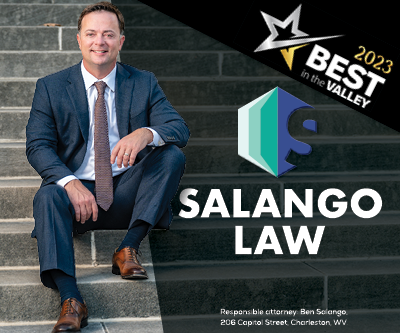By ROBIN JEAN DAVIS
CHARLESTON -- As the only woman on the West Virginia Supreme Court, I want to take this opportunity to write about women and the law, and the need to get more women into the legal profession.
Although I rarely found gender to be an issue in my career, it is an issue nationally and historically.
When I practiced law about half of my clients were men, and I represented more men than women in my divorce practice. In my campaigns, my gender came up only one time. I was at a campaign event in Huntington and an elderly man said, "You're too young to be a judge and you should be home raising your babies instead of running for office."
I politely told him I thought I would do a good job and I took into account that he was old. Really old.
Still, State Bar records indicate that of the 4,500 actively practicing lawyers in West Virginia, about 27 percent are women. Nationally, about 25 percent of the one million lawyers are women.
Although small, those percentages have been increasing steadily since the 1970s. Those percentages, and the fact that only seven of the 37 United States Supreme Court law clerks this year are women, indicates that women still are not equally represented in the profession or the key entry-level jobs that can lead to top law firms and judicial positions.
As you know, only two of the 66 circuit judge seats in West Virginia are held by women, both in Kanawha County.
When I entered law school at West Virginia University, half of my classmates were women. Classes there have been about half women and half men for many years -– until this year. The freshman class at WVU law school this year has 68 women and 99 men, bringing the overall female law student population down to 44.5 percent of the total.
When I joined the court in 1996, women were not quite so outnumbered. Justice Margaret Workman was still serving. She was the first woman elected to the Supreme Court and the first woman elected to statewide office in West Virginia. I had campaigned for her when I was still in private practice.
In 2000, my initial term ended, I ran for re-election and became the first woman re-elected to statewide office. Justice Workman did not run for re-election.
When I joined the court, there were also two women on the U.S. Supreme Court. Justice Sandra Day O'Connor's retirement last year has left that court also with just one woman. Justice O'Connor was a real role model for me. She was a stabilizing force on the court and was a trailblazer in both her professional life and private life.
The remaining female justice, Ruth Bader Ginsberg, spoke at the WVU law school in October 2005 and gave a very informative talk about the lack of women in the law and on the bench, and on progress being made to even the numbers. She and I agree it's vitally important to have at least one woman on all state and federal courts.
Women see things differently than men. When we are in conference, my colleagues point out issues that I simply had not contemplated. And I certainly point out issues to them. No one gives me any slack because I am a woman. And I don't give them any slack because they are men!
The Founding Fathers made freedom of speech the first amendment to the U.S. Constitution and established a bicameral Congress because they knew the value of diversity of opinion. Still, those same Founding Fathers –- all white men –- did not see the need to allow women to vote or hold elected office. Thus began a long history in this country of discriminating against women in the legal profession.
But there have always been women who managed to practice law anyway.
Most historians consider Margaret Brent the first female lawyer in America. She arrived in the Colony of Maryland in 1638. Margaret Brent was a landowner and businesswoman and was involved in more than 100 court cases.
Other women also acted as lawyers in the colonies and on the frontier, but their names and work are little known – or unknown – to history.
It wasn't until 1869 that Belle Mansfield became the nation's first female attorney to join the licensed bar. She passed the Iowa state examination even though she did not go to law school.
In 1870, Ada Kepley was the first woman to earn a formal law degree in the United States when she graduated from Union College of Law in Chicago, now Northwestern University. That same year, Esther McQuigg Morris became the nation's first female judge when she was appointed justice of the peace in a Wyoming mining town.
And in West Virginia, the WVU College of Law graduated its first woman, Agnes Westbrook Morrison, in 1895, 17 years after the school was founded. I'm proud to say that our state was one of the earliest to educate women in the law and to admit them to the bar.
The legal profession and the judiciary could still use more diversity.
As I said in a speech in September at Marshall University , I encourage all students, especially women, to consider a legal career. I also want to encourage my fellow members of the bar to foster an interest in the law among students they meet. The court system and the state need the service of more young women -– and young men -– of intellect, integrity and energy.
<>Davis is chief justice of the West Virginia Supreme Court of Appeals.

